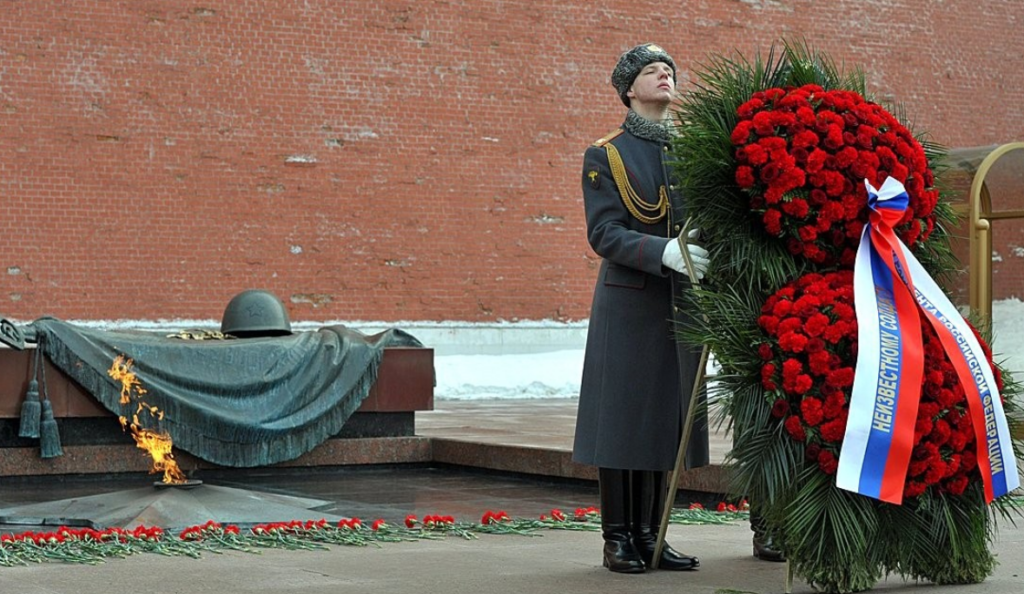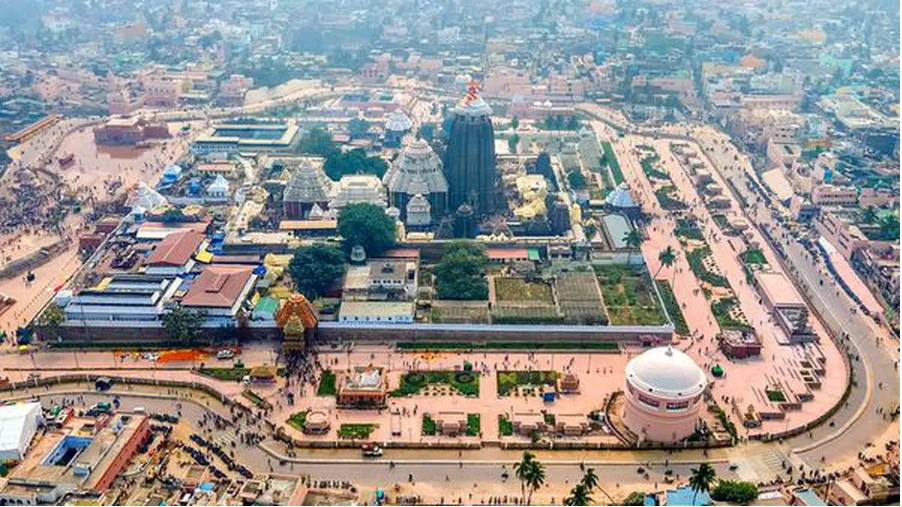10 July 2024 : Daily Current Affairs
1. What is the draft Digital Competition Bill?
- 1. What is the draft Digital Competition Bill?
- 2. On reducing tariffs for smartphone components
- 3. India and Russia Agree to Expedite Military Supplies Through Joint Ventures Amid Ukraine War Delays
- 4. Prime Minister receives Russia’s highest State Award
- 5. Prime Minister pays tribute at the ‘Tomb of the Unknown Soldier’ in Moscow
- 6. XVI Finance Commission constitutes Advisory Council
- 7. National Commission for Minorities advises States/UTs to hold “SARVA DHARMA MEETING” to protect and safeguard the interests of all Minorities
- Prelims Facts
- 1. Mali reiterates that exit from regional bloc is irreversible
- 2. ‘Outstanding work’: IIT-M team makes mineral nanoparticles with water
- 3. India, Russia to boost bilateral trade to $100 billion by 2030
(Source – The Hindu, International Edition – Page No. – 10)
| Topic: GS2 – Governance |
| Context |
| In February 2023, the Ministry of Corporate Affairs formed the CDCL to explore a new Digital Competition Bill, advocating an ex-ante framework to pre-empt anti-competitive practices in digital markets, modelled after the European Union’s Digital Markets Act. |
Committee on Digital Competition Law (CDCL) Formation
- In February 2023, the Ministry of Corporate Affairs constituted the Committee on Digital Competition Law (CDCL) to assess the necessity of a separate law for competition in digital markets.
- After a year of deliberation, the CDCL concluded that the current ex-post framework under the Competition Act, 2002, should be supplemented with an ex-ante framework.
- This ex-ante framework was laid out in the draft Digital Competition Bill.
Understanding the Ex-Ante Framework
- The Competition Act, 2002, is the primary legislation for preventing practices adverse to competition in India.
- It established the Competition Commission of India (CCI) as the national competition regulator.
- The existing framework is based on an ex-post model, allowing the CCI to act only after anti-competitive conduct has occurred.
- The CDCL advocates for an ex-ante framework in digital markets, enabling the CCI to pre-empt and prevent anti-competitive conduct by digital enterprises.
- An ex-ante competition regulation is unusual, with the European Union’s Digital Markets Act being the only comprehensive framework currently in force.
- The unique characteristics of digital markets, such as economies of scale and scope, and network effects, necessitate a preventative approach.
- Rapid and irreversible market tipping in favour of incumbents highlighted the inadequacy of the existing time-consuming process for timely scrutiny.
Draft Digital Competition Bill Framework
- The draft Bill is modelled after the European Union’s Digital Markets Act.
- It aims to regulate only “dominant” digital enterprises in specific market segments.
- The draft identifies ten core digital services, including online search engines, social networking services, and video-sharing platforms.
- The CCI will identify dominant digital enterprises based on quantitative standards, including the ‘significant financial strength’ test and the ‘significant spread’ test.
- Qualitative standards allow the CCI to designate an entity as a “systemically significant digital enterprise (SSDE)” even if it does not meet the quantitative thresholds.
- SSDEs are obliged not to indulge in anti-competitive practices, ensuring fair, non-discriminatory, and transparent operations.
- Prohibited practices for SSDEs include self-preferencing, restricting third-party application availability, anti-steering, tying or bundling non-essential services, cross-utilizing user data, and using non-public data to give an unfair advantage.
Response to the Draft Bill
- The draft Bill has faced significant opposition.
- Scepticism exists regarding the effectiveness of an ex-ante regulation model, partly due to its transposition from the European Union without considering jurisdictional differences and its unproven success.
- Concerns have been raised about the potential negative impact on investments for start-ups in India, with fears that they may avoid scaling up to stay below the regulatory thresholds.
- Restrictions on tying, bundling, and data usage could negatively impact Micro, Small, and Medium Enterprises (MSMEs), which rely on big tech to reduce operational costs and enhance customer outreach.
- Some Indian start-ups support the draft Bill, arguing it would address monopolistic practices by big tech.
- However, these start-ups also call for a revision of financial and user-based thresholds to prevent domestic start-ups from being unfairly regulated.
Conclusion
- The CDCL’s advocacy for an ex-ante framework in digital markets highlights the need for a preventative approach to competition regulation.
- The draft Digital Competition Bill aims to address the unique challenges of digital markets by imposing specific obligations on dominant digital enterprises.
- The mixed response to the draft Bill reflects the complexities and potential consequences of implementing such a regulatory framework in India.
| Practice Question: Discuss the rationale behind the Ministry of Corporate Affairs’ proposal for an ex-ante framework in the draft Digital Competition Bill, 2023, and its potential impact on India’s digital market and start-up ecosystem. (250 Words /15 marks) |
2. On reducing tariffs for smartphone components
(Source – The Hindu, International Edition – Page No. – 10)
| Topic: GS2 – Indian Economy – Effects of liberalisation on the economy. |
| Context |
|
Indian Cellular and Electronics Association (ICEA) Call for Tariff Reduction
- The Indian Cellular and Electronics Association (ICEA), representing mobile and electronics manufacturing units, has called for reducing tariffs on certain smartphone components.
- The ICEA, whose members include major players like Apple and Foxconn, argues against tariff cuts for components widely manufactured in India, such as open cells and LED light parts.
Rationale for Tariff Cuts
Reducing Input Costs:
- The primary reason for the demand is to lower input costs for smartphone assembly units.
- High tariffs on components increase the cost of local assembly operations.
Complex Components:
- The industry seeks duty cuts on highly complex and miniaturised inputs like Printed Circuit Boards (PCBs) and sub-assemblies, which are not close to being manufactured in India.
- Domestic production of these components could take around eight years to develop.
Aggregate Demand:
- The ICEA notes that the overall aggregate demand for some inputs is much larger than the demand created by current production levels.
- High tariffs on PCBs (20%) and other inputs are not leading to increased domestic production but are raising assembly costs as components still need to be imported.
Competitive Re-Alignment
Global Competitiveness:
- The proposed changes are aimed at keeping up with other major electronics manufacturing hubs like China, Vietnam, Thailand, and Mexico.
- Vietnam’s “bonded zones” with special duty exemptions allow for lower tariffs on component imports, making their products more competitive.
Technological Competitiveness:
- ICEA argues that Indian companies should use the best available technologies for competitiveness, irrespective of whether the technologies are made in India.
- The focus should be on making phones competitive in the global market rather than import substitution.
Learning from China:
- When China started assembling smartphones 15 years ago, its contribution was limited to labour-intensive assembly, accounting for about 3.6% of the total manufacturing value addition.
- Today, Chinese firms have captured about 25% of the manufacturing value added by providing technology-intensive parts, offering higher value addition than pure assembly services.
- ICEA emphasises the need to scale up smartphone production through exports to be competitive with China and Vietnam.
Production Linked Incentive Scheme:
- Smartphone assembly units have benefited from the production linked incentive scheme for mobile manufacturing, which subsidises domestically assembled phones.
- Reduced tariffs would enhance the benefits of this scheme, making Indian smartphones more competitive globally.
Conclusion
- The ICEA’s call for tariff reduction is driven by the need to lower input costs, address market saturation, and improve global competitiveness.
- The focus is on reducing tariffs for complex components not yet manufactured in India to make local assembly operations more cost-effective.
- Aligning with global practices and learning from China’s experience, the ICEA emphasises scaling up production and increasing exports to maintain competitiveness in the global smartphone market.
| Practice Question: Discuss the rationale behind the Indian Cellular and Electronics Association’s demand for tariff reductions on smartphone components and its potential impact on India’s global competitiveness in electronics manufacturing. (250 Words /15 marks) |
3. India and Russia Agree to Expedite Military Supplies Through Joint Ventures Amid Ukraine War Delays
(Source: Indian Express; Section: Govt & Politics; Page: 08)
| Topic: GS2 – International Relations – Agreements involving India or affecting India’s interests |
| Context: |
|
Analysis of News:
Importance of Russian-Origin Military Hardware
- A significant portion of India’s military hardware originates from Russia, necessitating a consistent supply of spare parts for maintenance.
- The Ukraine war has caused delays in Russia’s scheduled deliveries of crucial weapons systems to India, such as the S-400 Triumf surface-to-air missile systems.
- Despite these delays, top Indian military leaders have assured that operational preparedness has not been affected.
- However, the need for a reliable supply chain for spare parts remains critical.
Mitigation Efforts and Alternative Sources
- Since the onset of the Russia-Ukraine war in 2022, India has been exploring alternative sources for procuring spares.
- These efforts include looking towards indigenous sources and countries like Poland and Georgia.
- Last year, former Army Chief General Manoj Pande highlighted the Army’s assessment of its reliance on Soviet-origin equipment and the identification of alternative sources for spares and ammunition amid the ongoing conflict.
Joint Ventures and Self-Sufficiency
- The joint statement released by India and Russia emphasized reorienting their defense partnership towards joint research and development, co-development, and joint production of advanced defense technology.
- This initiative aligns with India’s quest for self-sufficiency in defense. The two sides agreed to encourage joint manufacturing of spare parts, components, and other products under the Make-in-India program.
- This would involve the transfer of technology and the establishment of joint ventures to meet the needs of the Indian Armed Forces and export to mutually friendly third countries.
Establishment of a New Working Group
- In line with their commitment to technological cooperation, India and Russia agreed to establish a new Working Group on Technological Cooperation.
- The provisions and details of this group will be discussed during the next meeting of the Intergovernmental Commission on Military and Military Technical Cooperation in Moscow.
- This working group aims to facilitate collaboration and streamline processes related to the maintenance and development of military technology.
Conclusion
- The agreement between India and Russia to expedite the delivery of military spare parts through joint ventures represents a strategic move to mitigate the impact of supply chain disruptions caused by the Ukraine war.
- By fostering joint research, development, and manufacturing, both nations aim to enhance their defense capabilities and achieve greater self-sufficiency.
- The establishment of the new Working Group on Technological Cooperation further underscores their commitment to sustained collaboration in defense technology.
| What Defence Equipment does India procure From Russia? |
|
Submarines:
Frigates & Guided-missile Destroyers:
Favourable Russian Military Exports to India:
|
| PYQ: What is the significance of Indo-US defence deals over Indo-Russian defence deals? Discuss with reference to stability in the Indo-Pacific region. (250 words/15m) (UPSC CSE (M) GS-2 2020) |
| Practice Question: Discuss the implications of the recent agreement between India and Russia to expedite the delivery of spare parts for Russian-origin military platforms through joint ventures in India. How does the ongoing war in Ukraine affect India’s defense preparedness, and what steps has India taken to mitigate these impacts? (250 words/15 m) |
4. Prime Minister receives Russia’s highest State Award
(Source – https://pib.gov.in/PressReleseDetail.aspx?PRID=2031894 )
| Topic: GS2 – International Relations – Bilateral Relations |
| Context |
| Prime Minister Narendra Modi received Russia’s highest honour, “The Order of St. Andrew the Apostle,” from President Vladimir Putin, recognizing his efforts in strengthening India-Russia relations.Modi dedicated the award to India’s people and their enduring friendship with Russia. |
Analysis of the news:
- President Vladimir Putin awarded Prime Minister Narendra Modi Russia’s highest national honour, “The Order of St. Andrew the Apostle”.
- The award recognizes Modi’s efforts in strengthening India-Russia relations.
- The award was announced in 2019 and presented in St. Andrew Hall in the Kremlin.
- Modi dedicated the award to the people of India and the traditional India-Russia friendship.
- He highlighted that the award signifies the Special and Privileged Strategic Partnership between the two nations.
- Instituted over 300 years ago, Modi is the first Indian leader to receive this honour.
5. Prime Minister pays tribute at the ‘Tomb of the Unknown Soldier’ in Moscow
(Source – https://pib.gov.in/PressReleseDetail.aspx?PRID=2031690 )
| Topic: GS2 – History, GS2 – International Relations |
| Context |
| Prime Minister Narendra Modi paid tributes and laid a wreath at the ‘Tomb of the Unknown Soldier’ in Moscow, a war memorial at the Kremlin wall honouring Soviet soldiers who died in World War II. |

Tomb of the Unknown Soldier:
- The Tomb of the Unknown Soldier is a war memorial located at the Kremlin wall in Moscow, Russia.
- It honours the Soviet soldiers who lost their lives during World War II.
- The memorial was inaugurated on May 8, 1967, to mark the 22nd anniversary of the Soviet victory over Nazi Germany.
- An eternal flame burns at the site, symbolising everlasting remembrance.
- A guard of honour from the Kremlin Regiment is stationed at the tomb.
- The tomb features an inscription reading “Your name is unknown, your deed is immortal.”
- It is a significant site for official ceremonies and state visits, where dignitaries pay their respects.
6. XVI Finance Commission constitutes Advisory Council
(Source – https://pib.gov.in/PressReleseDetail.aspx?PRID=2031877 )
| Topic: GS2 – Indian Polity – Constitutional Bodies |
| Context |
| The Sixteenth Finance Commission formed an Advisory Council, with Dr. Poonam Gupta as Convenor, to advise on Terms of Reference, assist in research, and adopt best practices to enhance fiscal devolution and the quality of the Commission’s recommendations. |
Analysis of the news:
- The Sixteenth Finance Commission has established an Advisory Council.
- Members include:
- Dr. D.K. Srivastava
- Mr. Neelkanth Mishra
- Dr. Poonam Gupta
- Ms. Pranjul Bhandari
- Mr. Rahul Bajoria
- Dr. Poonam Gupta will serve as the Convenor of the Advisory Council.
- The Council’s roles and functions are:
- Advising the Commission on any Terms of Reference (ToR) or related relevant subjects.
- Assisting in the preparation of papers or research studies.
- Monitoring or assessing studies commissioned by the Finance Commission.
- Enhancing the Commission’s understanding of the issues within its ToR.
- Broadening the Commission’s scope by seeking best national and international practices.
- Focusing on matters related to fiscal devolution.
- Improving the quality, reach, and enforcement of the Commission’s recommendations.
| Finance Commission |
|
Purpose and Establishment:
Article 280:
Article 281:
Functions:
Powers:
Advisory Role:
|
| PYQ: How is the Finance Commission of India constituted? What do you know about the terms of reference of the recently constituted Finance Commission? Discuss. (250 words/15m) (UPSC CSE (M) GS-2 2018) |
| Practice Question: Explain the constitutional provisions governing the establishment, composition, and functions of the Finance Commission of India. How does the Commission contribute to fiscal federalism in the country? (150 Words /10 marks) |
7. National Commission for Minorities advises States/UTs to hold “SARVA DHARMA MEETING” to protect and safeguard the interests of all Minorities
(Source – https://pib.gov.in/PressReleseDetail.aspx?PRID=2031933 )
| Topic: GS2 – Indian Polity – Statutory Bodies |
| Context |
|
National Commission for Minorities:
- Establishment and Composition:
- Established in 1992 under the National Commission for Minorities Act, the Commission comprises a Chairperson, Vice-Chairperson, and five Members nominated by the Central Government, with at least five members from minority communities.
- Functions and Responsibilities:
- Evaluates minority development progress.
- Monitors safeguard implementation.
- Makes recommendations to the Central and State governments.
- Conducts research on socio-economic and educational issues.
- Addresses specific minority rights complaints.
- Submits periodic reports to the government on minority difficulties.
- Powers of the Commission:
- Empowered with civil court-like authority for summoning, evidence collection, and document requisition.
- Government Responsiveness:
- Central and State governments must respond to NCM’s recommendations, explaining actions taken or reasons for non-acceptance.
- Challenges:
- Human resource deficiencies and staffing inconsistencies.
- Financial constraints affecting research and operational efficacy.
- Limited integration with state-level minority commissions.
- Limited legal authority compared to judicial oversight.
- Basic technological utilisation.
- Recommendations for Improvement:
- Implement outcome-based performance metrics.
- Strengthen state-level commissions for better integration and effectiveness.
- Upgrade technological infrastructure for efficiency.
- Set targets to manage case pendency effectively.
The NCM plays a crucial role in safeguarding minority interests in India, though it faces operational challenges that could be addressed through structural reforms and enhanced governmental support.
| Practice Question: Discuss the role and challenges of the National Commission for Minorities (NCM) in India. How can its effectiveness be enhanced through reforms and better governmental support? (250 Words /15 marks) |
Prelims Facts
1. Mali reiterates that exit from regional bloc is irreversible
(Source – The Hindu, International Edition – Page No. – 15)
| Context |
|
Economic Community of West African States (ECOWAS):
- Established: May 28, 1975
- Treaty: Treaty of Lagos
- Member States: 15 countries including Benin, Burkina Faso, Cape Verde, Côte d’Ivoire, Gambia, Ghana, Guinea, Guinea-Bissau, Liberia, Mali, Niger, Nigeria, Senegal, Sierra Leone, and Togo.
- Headquarters: Abuja, Nigeria
- Objectives:
- Promote economic integration and cooperation among member states.
- Foster trade liberalisation and monetary cooperation.
- Enhance social and cultural exchanges.
- Ensure peace and security in the region.
- Key Programs:
- ECOWAS Trade Liberalisation Scheme (ETLS)
- Common External Tariff (CET)
- West African Monetary Zone (WAMZ)
- Challenges: Political instability, economic disparity, security issues, and infrastructural deficits.
2. ‘Outstanding work’: IIT-M team makes mineral nanoparticles with water
(Source – The Hindu, International Edition – Page No. – 7)
| Context |
|
Discovery and Significance of Water Microdroplets’ Abilities:
- Discovery: Researchers at IIT Madras, discovered that microdroplets of water, a thousandth the size of a raindrop, can break down minerals into nanoparticles.
- Chemical Transformations: Microdroplets facilitate chemical reactions that bulk water cannot, owing to their tightly packed molecules and high surface reactivity.
- Electric Charge Carriers: They carry electric charge effectively, crucial for atmospheric processes and potentially useful in biochemical reactions.
- Applications:
- Nanoparticle Formation: Useful for creating nanomaterials from minerals like silica and alumina, which could revolutionise industries from agriculture to materials science.
- Potential in Agriculture: Nanoparticles formed by microdroplets could enhance soil fertility and crop productivity, particularly in silica uptake by plants.
- Origins of Life: The findings suggest relevance to understanding proto-cells and early biochemical processes, offering insights into the origin of life on Earth.
- Environmental Impacts: Investigating microdroplet interactions with minerals in atmospheric processes could reveal new insights into environmental transformations.
3. India, Russia to boost bilateral trade to $100 billion by 2030
(Source – The Hindu, International Edition – Page No. – 5)
| Context |
|
Analysis of the news:
- India and Russia aim to increase bilateral trade to $100 billion by 2030, focusing on using national currencies to bypass Western sanctions.
- Key areas of cooperation include projects in Russia’s Far East, reducing non-tariff barriers, and enhancing connectivity via new routes like Chennai-Vladivostok and the Northern Sea Route.
- Priority sectors for investment include energy, nuclear energy, infrastructure, and trade facilitation.
- MoUs were signed on climate change, polar research, legal arbitration, and pharmaceutical certification.
- Russia agreed to open consulates in Kazan and Yekaterinburg for Indian diaspora services.
- Trade between the nations surged due to Indian imports of Russian crude post-Ukraine sanctions.
- The summit marked a shift towards economic issues while continuing military cooperation discussions.
- Future plans include hosting the first “Extended BRICS” summit in Kazan.
4. Ratna Bhandar of Puri’s Jagannath Temple Set to Open After Four Decades
(Source: Indian Express; Section: Express Network; Page: 10)
| Context: |
|
Analysis of News:
About Jagannath Temple

- It is located in Puri, Odisha.
- It is one of the most famous and sacred Hindu temples in the world.
- It is dedicated to Lord Jagannath, a form of the Hindu deity Vishnu.
- It is believed to have been built during the reign of King Anantavarman Chodaganga Deva, of the Eastern Ganga dynasty, in the 12th century.
- This temple is called ‘Yamanika Tirtha’ where, according to the Hindu beliefs, the power of ‘Yama’, the god of death, has been nullified in Puri due to the presence of Lord Jagannath.
Architecture:
- The Jagannath Temple is a striking example of Kalinga architecture, a distinct style prevalent in the Odisha region.
- The temple’s main structure, the sanctum sanctorum, or the garbhagriha, houses the idols of Lord Jagannath, Balabhadra, and Subhadra.
- Ratha Yatra is a Hindu festival associated with Lord Jagannath held at Puri in Odisha.
- The festival commemorates Jagannath’s annual visit to Gundicha Temple via Mausi Maa Temple (aunt’s home) near Balagandi Chaka, Puri.
- The most famous Rath Yatra festival begins on the second day of the bright half of the lunar month of Ashadha (June–July) and lasts for nine days.
- During this time, the deities are taken out of the Jagannath Puri Temple and placed on three massive chariots.




